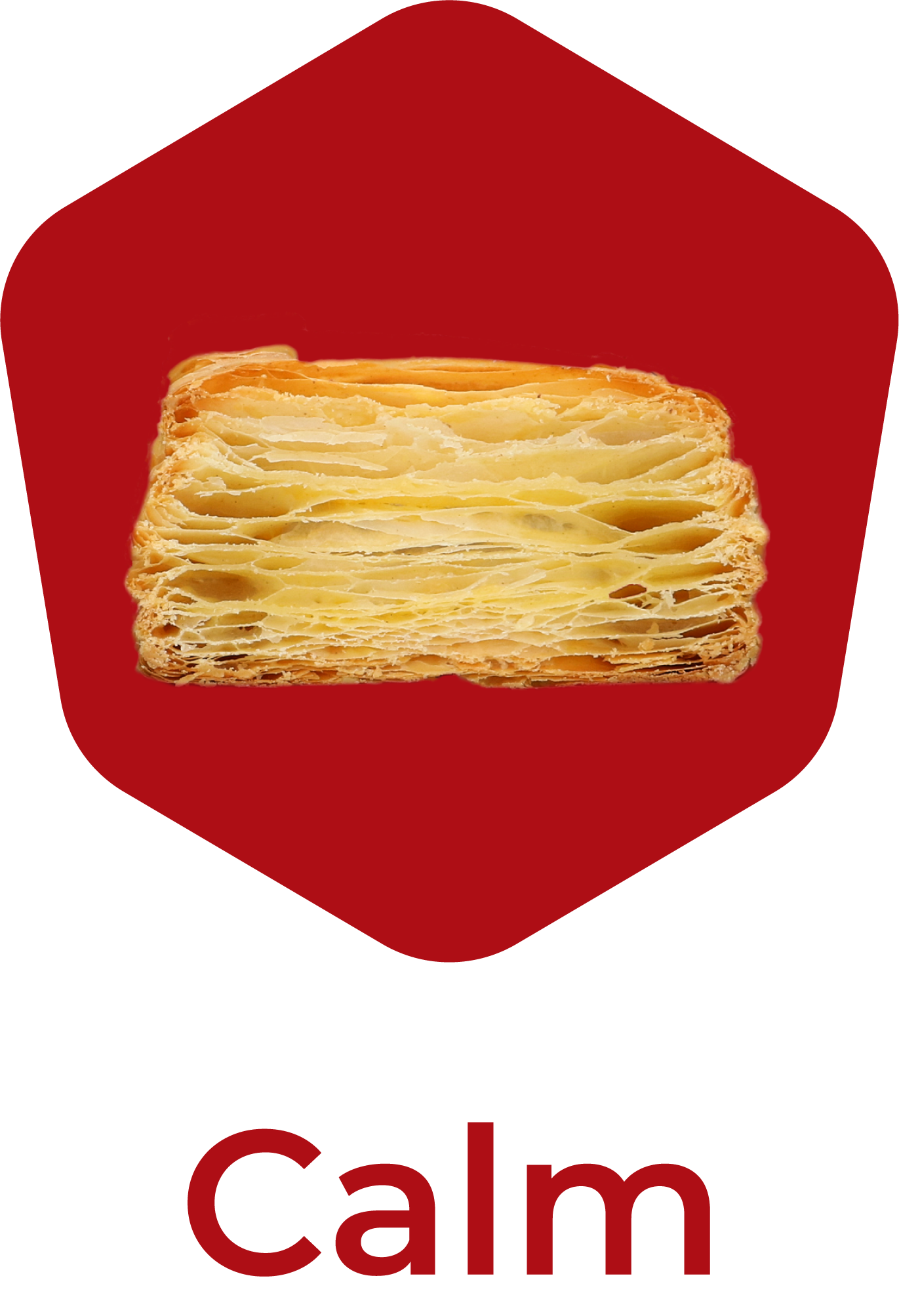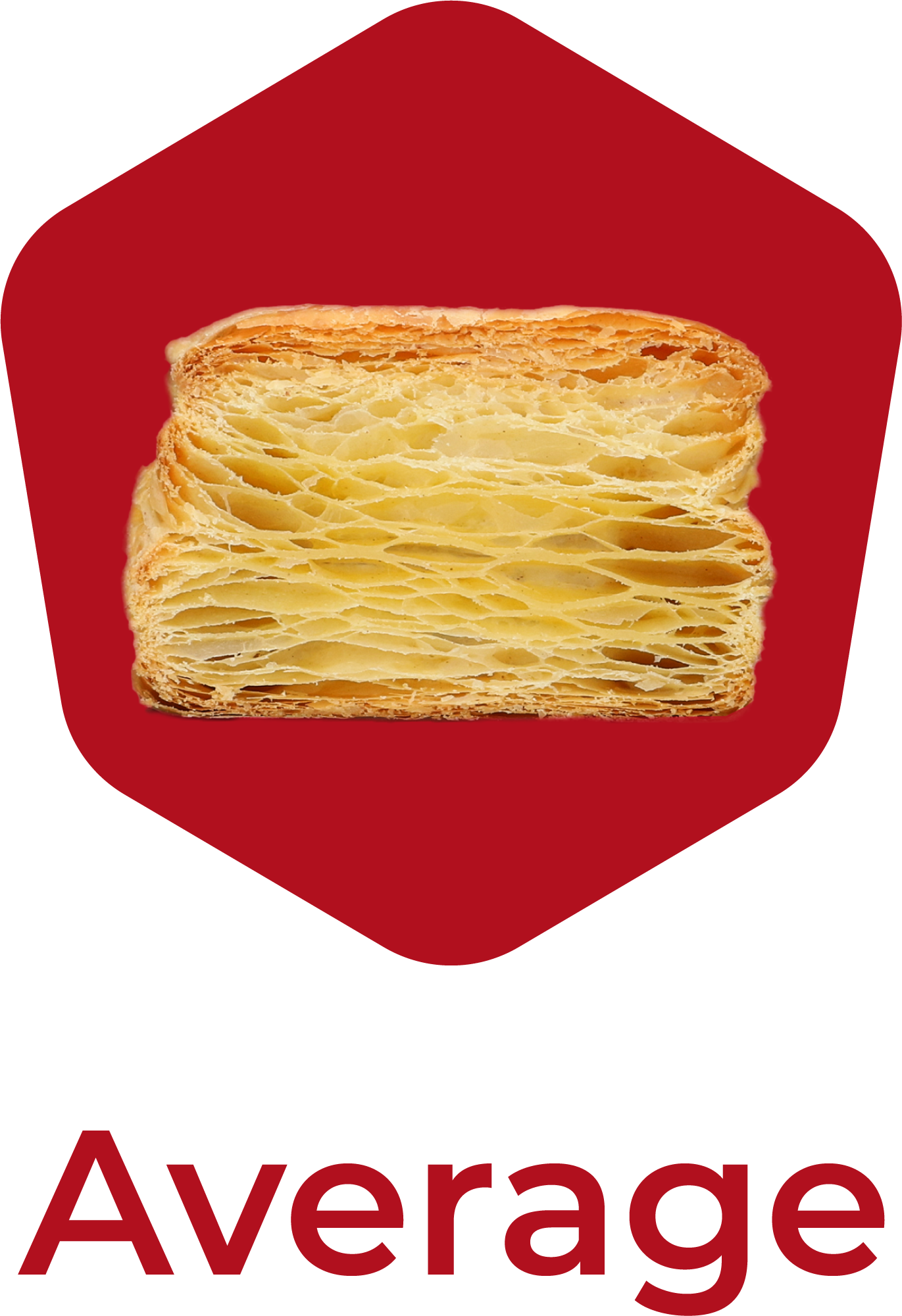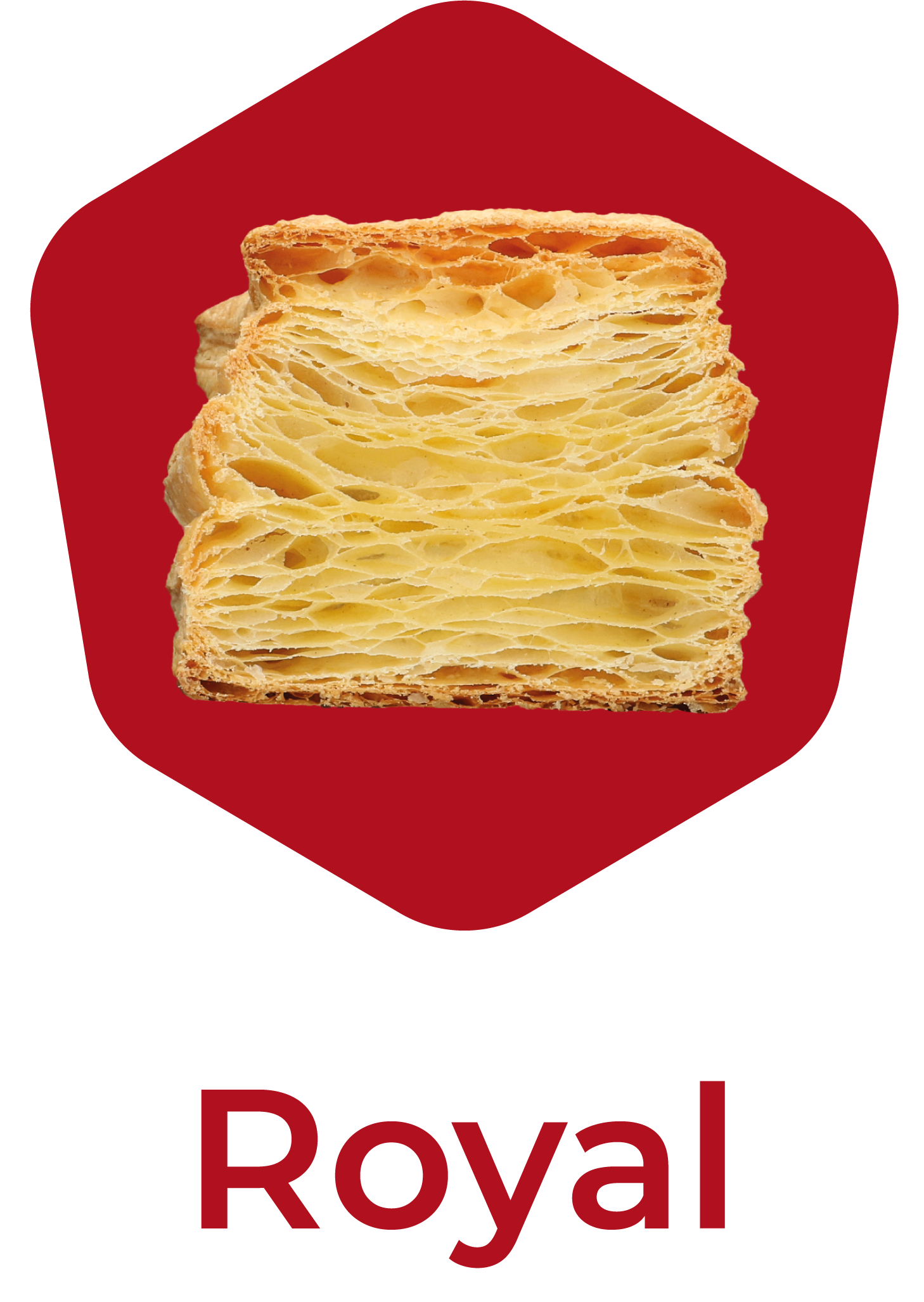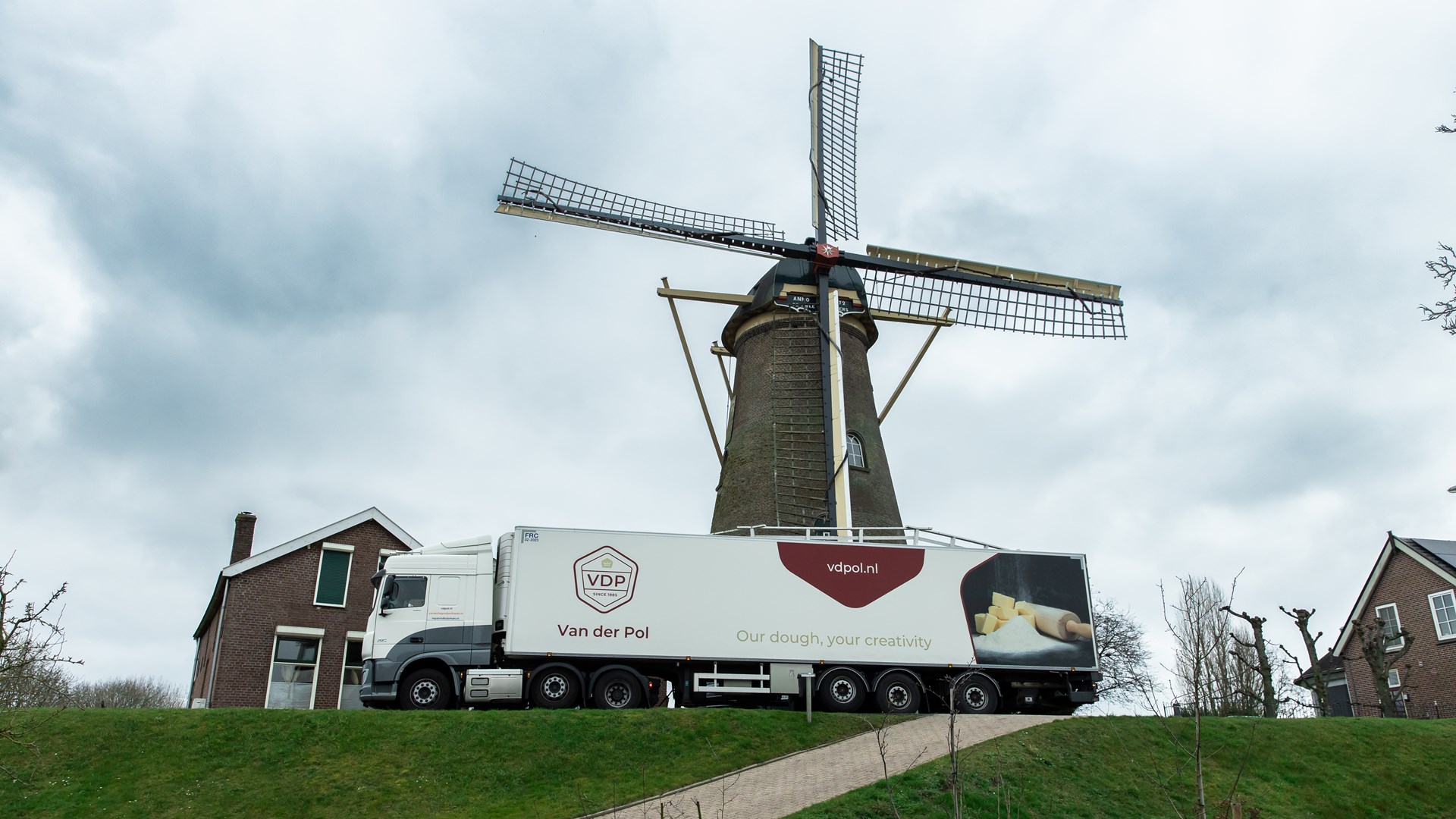Puff pastry consists of wheat flour, water, fat (butter or margarine) and salt. It is also possible that the dough is made with yeast, in that case we call it risen puff pastry or croissant dough. There are many different methods to make puff pastry. Every country has its own way. The most used methods are the Dutch and the French method. Did you know that we are one of the few companies that produce puff pastry using both the Dutch and the French method?
With the Dutch method, cubes of butter are added after the dough has been kneaded. These cubes are spread evenly in the dough without smearing them. With the French method, a layer of butter is kneaded into the dough, which is then folded several times to obtain a dough with several layers. If desired, our doughs are also available with margarine or with a mixture of butter and margarine.
Puff pastry is characterised by a flaky effect. This structure of layers is created by the turning of the puff pastry. The puffing effect occurs during baking, when the water evaporates and the layers are pushed apart. It is important for you to know which puff pastry you can best use for a specific end product. Our doughs can be divided into 3 effects:
- Calm
- Average
- Royal



